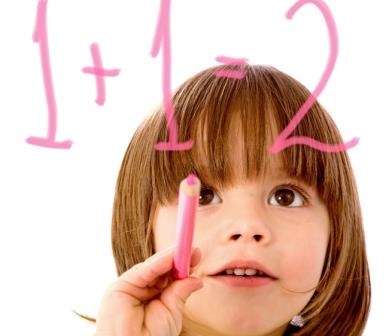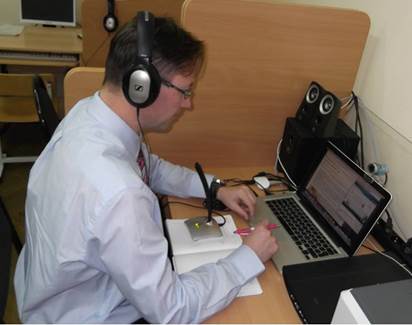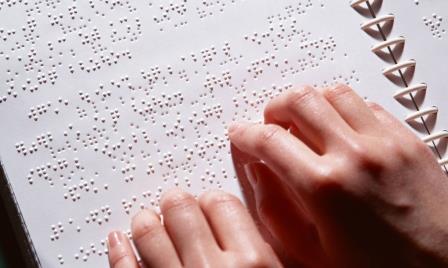1. INTRODUCTION
The teacher's experience of well-being and satisfaction significantly affects classroom climate and student work. Teachers interact with various individuals at work including colleagues and parents, but interactions with students have the most decisive influence on all positive and negative emotions involved. According to the World Health Organization [33], wellbeing and life satisfaction are seen as essential components and quality of life indicators [6]. Maintaining a sense of wellbeing means being able to live life and manage its challenges with a sense of joy, balance, stability, and satisfaction, regardless of external conditions.
This state is based on three important aspects - how we feel about ourselves, the quality of our relationships, and our competencies to manage our feelings in difficult situations [16]. In 2012 The International Journal of Wellbeing released a paper where all important well-being aspects were discussed and summarized. In this paper, the authors came up with their definition when «well-being is when individuals have the psychological, social and physical resources they need to meet a particular psychological, social and physical challenge» [19].
In terms of teacher´s wellbeing, Viac, Fraser [28] «defined teachers' wellbeing by four key components: physical and mental wellbeing, cognitive wellbeing, subjective wellbeing, and social wellbeing». Teacher's own wellbeing is related to their classroom practice and student outcomes building upon contemporary models of teaching [15] when two different expected outcomes are important: inward results for teachers in terms of levels of stress and intentions to leave the profession and outward outcomes on quality teaching in terms of classroom processes and student' wellbeing [31]. Since teachers' personal wellbeing is essential not only for the teachers themselves but also for students. Teachers consciously constructed their students' socio-psychological well-being in building feelings of relatedness, competence, and autonomy in interactions with students [25].
Studies on teacher wellbeing have focused primarily on the negative factors that affect teachers, i. e., pressures related to administrative overload, class management, and lack of team support and supervision. Petegem et al. [6] emphasized the most cited workplace-related factors that can influence job satisfaction concerning well-being like the content of the job, role conflicts, and role ambiguity; the pressure of work and autonomy, physical and material working conditions, school management, school climate, and interpersonal relationships are among
Existing research studies many aspects and characteristics and shows promise for conceptualizing, measuring, and improving teachers' well-being in teacher-student interactions, but many gaps remain. However, what is neglected in much of this research are interpersonal relationships between teachers and students [13] as an essential aspect of a teacher's wellbeing [26]. Teacher-student interactions have an impact on classroom management and affect learning and growth. According to the developmental perspective, establishing a positive teacher-student relationship aids students' cognitive, social, and emotional development and enhances their mental wellbeing [1].
This literature review shows how teacher's wellbeing and teacher-student interactions are studied and analyzed. This article conceptually frames research on teacher-student interactions and summarizes the evidence linking such interactions with student outcomes.
2. STUDY OBJECTIVES
Due to the breadth and complexity of the concept of wellbeing, the theme has been narrowed for the purposes of this literature review. The main objective was to determine how teachers' well-being has been researched in relation to teacher-student interactions in the classroom and how these interactions affect the individual teacher's well-being. Although the studies selected examine the theme in the context of several learning cultures and environments worldwide, all the sources chosen are published in English.
Two research questions were identified:
- How has teacher wellbeing been examined directly concerning teacher-student interactions in the classroom?
- What key aspects and themes have been identified in research on teacher wellbeing in relation to teacher-student interactions in the classroom?
3. METHODOLOGY
Given the complexity of the concept of wellbeing and the variability among different views, in the present study only the categories considered key to the research plan. The individual studies were analyzed in relation to the above mentioned research questions and the findings were analyzed.
The research problem focuses on teacher well-being, specifically what influences well-being and how it affects teachers' and students´ interpersonal relationships in the classroom. The desirable outcome was creating a knowledge database consisting of works by prominent authors who have defined and examined the fundamental issues, categories, and methods as characterized by international researchers.
Based on this formulation of the problem, key search terms were identified for the literature review: teacher wellbeing, teacher-student relationships, teacher-student interaction/s, classroom interaction/s, teacher interpersonal behavior, classroom management
We searched for various combinations of these keywords in English. The author of the text focused on international studies and research, i.e., outside of the Czech educational environment in which she works. In the first phase, the title, abstract, and full text of an entry were evaluated with regard to the relevance of the texts to the research question.
Articles were excluded according to the following criteria:
- It dealt with research into teacher wellbeing only in general, not in terms of the teacher-student relationship in the classroom.
- It dealt primarily with research into student/learner wellbeing in general.
- It deals primarily with teacher burnout and related factors.
- It was not available in full text.
The research articles, which were written from 2005 to 2020, were found in the databases EBSCO and GOOGLE SEARCH.
In the second phase, the articles were thoroughly read through, and the information was analyzed. Each text was entered in the overview table, but some were not included in the review due to the limited text capacity. In addition, the texts chosen as most noteworthy were recorded onto separate cards on which categories and preliminary ideas were written. These cards were then rewritten and categorized into groups of uniform meaning.
4. RESULTS
A total of 35 studies were identified using the selected search strategy. Of these, 15 articles were subjected to analysis after the exclusion criteria were applied, with the oldest study from 2005 and the latest from 2020, specifically 2 significant and substantial literature reviews, 11 quantitative research designs as well as 2 qualitative studies.
4.1. Relations between teacher´s wellbeing and teacher-student interactions
Teachers interact with various individuals at work, including colleagues and parents. Still, interactions with students have the most decisive influence on all involved's positive and negative emotions and personal well-being. These interactions and relationships are experienced differently by both teachers and students, and the perceptions of these connections are reflected in students' and teachers' well-being [9]. Teacher well-being and teacher-student interactions are very closely linked. Virtanen et al. [32] demonstrated the particularly close link between well-being and interpersonal relationships in the teacher's classroom. They established that teacher-student interactions and the teachers' well-being were inter-related. Correspondingly, Harding et al. [20] found that «better teacher well-being was associated with better student well-being and lower student psychological distress».
Maintaining positive interpersonal relationships is the basis for human functioning. These bonds among individuals reflect the basic human need to belong somewhere and be close to another person. It is based on the quality of strong and healthy relationships in school and elsewhere that the subjective sense of one's well-being is perceived positively [20]. On the other hand, inadequately satisfying interpersonal relationships in the classroom have been identified as a significant factor that seriously threatens the well-being of teachers [6].
One study by Paterson and Grantham [8] emphasizes the need to focus primarily on the positive factors that affect teacher well-being, i.e. highlighting the quality of teacher-student relationships, the importance of communication and cooperation, and the formation of the realistic perception of teaching. To add to this, mental representation about yourself, others, and quality relations form the development of new interactions and friendships if they are positive [13].
4.2. Theoretical concepts related to teacher´s wellbeing and teacher-student interaction in analyzed studies
Theoretical concepts related to the theme of well-being and associated categories have also been explored, which can provide a broader theoretical framework for understanding the meaning and value of teacher-student relationships. In particular, by Spilt et al. [13], one review study maps out the importance and significance of teacher-student relationships to an educator's professional and personal life. This review is valuable because it explores these issues using two theories – the Self-Determination Theory (SDT) describing motivation and Attachment theory.
Self-Determination Theory postulates three universal needs of man: the need for autonomy, i. e., decision making, the need for self-actualization, i.e. belonging in a place where communication and friendship can be met, the need for competence, i. e., the ability to achieve goals and manage difficulties effectively. Meeting these three needs is vital for well-being. Creating and maintaining quality relationships and effectively managing stress and fulfilling goals is a prerequisite for any person to achieve a sense of well-being [13].
The second notable explanatory tool is Attachment theory in Spilt et al. [13] study, which is quite noteworthy for the idea that new relationships and friendships are formed based on one's thought representations of oneself and others. These preconceptions – self-perception, one's perceptions of others, and the dynamics among these relationships – both control the development of new friendships and significantly shape established relationships. Further, researchers also focus on conflict and the teacher's ability to handle disagreements as a fundamental aspect of a sense of well-being. These results are interpreted in the context of the second framework in terms of the transactional model of stress and coping.
The Frenzel model of teacher emotions [5] is another paradigm used to theoretically anchor the issue. This model is key for this study's research questions. It already specifically focused on emotions, namely examining the teacher's feelings concerning how they are influenced in terms of student behavior and relationships between teacher and learner. In this study, well-being appeared as a keyword, not in the title of the article.
The last significant theoretical context to guide our analysis of the relationship between educator-learner interactions and teacher well-being is the framework of Teaching Through Interactions (TTI). In this model, interactions are described in 12 dimensions categorized into three main categories: emotional support, classroom organization and management, and instructional support [32].
4.3. Research designs and investigative methods
To explore teacher well-being and teacher-student interaction in the classroom, 15 suitable studies were found, specifically two significant and substantial literature reviews, 11 quantitative research designs, as well as two qualitative studies.
In the cases of two literature reviews, a study by McCallum et al. [26] attempts to describe teachers' well-being and the particular issues involved against the background of a more general concept of well-being. The article also defines the essential factors necessary for the teacher's own personal well-being experience in interaction with students. A literature review by Spilt et al. [13] considers the importance of teacher-student interactions for well-being, starting from the Transactional Model of Stress and Coping of Lazarus.
In quantitative studies, various tools have been used to map out and understand the complicated phenomenon of well-being and comprehend the complexity of dynamics regarding the interactions and interpersonal relationships between teachers and students and the associated categories of these relationships.
The quantitative studies that were selected for analysis used the following surveys as tools of measurement which are organized into four categories: wellbeing in relation to happiness and positive psychological functioning in two studies. The other category is measuring a teacher´s wellbeing concerning interactions between teachers and students. The third category demonstrates instruments measuring and connecting teacher´s wellbeing and work functioning and selfefficacy. Teachers´emotions, emotional strain, and resilience as well as other techniques are shown in the last category.
- the Oxford Happiness Questionnaire (OHQ) by Hills and Argyle and Teachers'Sense of Efficacy scale of the Tschannen-Moran and Woolfolk-Hoy's [7];
- teacher Subjective Wellbeing Questionnaire (TSWQ) as an important instrument to measure teachers positive psychological functioning at work Renshaw et al. [29];
- the Questionnaire of Teacher Interaction (QTI) designed by Wubbels, Créton, Brekelmans, and Hooymayers and the Questionnaire on teacher well-being designed by Aelterman, Engels, Van Petegem and Verhaeghe was chosen to measure interactions between student and teacher in Van Petegen et al.'s study. This Questionnaire is based on a quantitative and qualitative study;
- a study by Roffey [11] uses structured interviews with individuals according to the format described in the Teacher Relationship Interview [11];
- quality of School Work life and Psychological well-being questionnaire in the study by Ilgan et al. [6] investigated the relationship between quality of school work life (QSWL) and psychological well-being (PWB) of public school teachers;
- The occupational self-efficacy questionnaire developed by Sanjoyot Pethe, Sushama Chaudhari and Pinder Dhar has been employed to assess the occupational effectiveness of the employees. To measure Psychological well-being, Carol Ryff's Psychological Well-Being Scale was used in the study by Salimirad and Srimathi [30];
- a German version of Maslach Burnout Inventory (MBI) which assess emotional strain and accomplishment by asking how often certain work-related emotions and cognitions are present plus student-teacher relationship quality, relational closeness was assessed with the student-Teacher Relationship Scale [27];
- one useful Questionnaire is based on the Frenzel model in Hagenaur's study [5], specifically measure the emotions of teachers diagnosed perceptions regarding their experiences of enjoyment, anger, and anxiety during classroom teaching, along with learner motivation, discipline in the classroom, and a sense of solidarity with students. These questionnaires were interconnected in various ways;
- [15] used the short form of the Five-Factor Mindfulness Questionnaire assessed five components of teacher mindfulness skills: mindful observing, describing, active awareness, nonjudgement, and nonreactivity. Plus teacher job stress and symptoms of occupational burnout, depression, and anxiety as indicators of occupational health and well-being were examined by five instruments – Job Stress Seven items assessed teachers' job-related stress (adapted from Lambert), Occupational Burnout from the Maslach Burnout Inventory, The Beck Depression Inventory, Spielberger et al.'s Teacher-student interaction quality was assessed using the Classroom Assessment Scoring System-Secondary. Observations were conducted in teachers' self-identified most challenging classrooms on 2 days;
- in a study by Jenings et al. [23] teachers' classroom was observed and coded using the Classroom Assessment Scoring System (CLASS) to monitor the efficacy of program Cultivating Awareness and Resilience in Education (CARE), plus self-report measures and assessments of the participating students. Analysis based on observation and self-reports of high school teachers was the research tool of a quite recent study of interaction and well-being [32].
As indicated, the teacher´s well-being concerning teacher-student interactions has been examined mainly quantitatively, with the teacher's interpersonal behavior measured mainly by teachers' perceptions. In the case of qualitative studies, semi-structured interviews [18] were used. The research of Harding [21] used interviews along with focus group methods.
4.4. Factors influencing teacher wellbeing and teacher-student interactions in analyzed studies
Nevertheless, many factors contribute to personal well-being. The literature review already mentioned by McCallum et al. [18] identifies intrinsic factors that influence teacher well-being. Specifically, individual personality, teacher's particular style of interaction in the classrooms, classroom stress management and resilience, emotions, social competencies, and the individual teacher's ability to respond to work demands, and level of fatigue, exhaustion, and stress.
Teacher's characteristics towards well-being
Individual personality plays a sizeable role in determining a teacher's particular style of interaction in the classroom. The teacher's qualities are important for the development of authentic interactions and relationships with his students and the skills to create a safe, inspirative, and democratic classroom environment are essential attributes for effective teaching. A study by Van Petegem et al. [14] highlights yet other characteristics that significantly affect well-being and interpersonal behavior, such as gender and the level of perceived safety in the workplace. Both of these are essential elements that affect the ability to control and manage situations and cooperate with students. Teacher gender influences how he or she perceives his or her submitting-opposing interpersonal behavior in the classroom. Further, years of experience have an impact on teacher well-being [14]. In the study mentioned above, positive relations were found between age and quality of work life. Teachers who had been working for 15–19 years had more positive emotions towards school when teachers 40 years old and older have more positive attitudes towards their work than younger teachers. Shortly said, experienced teachers have a better-developed sense of professional well-being than their less experienced colleagues, according to the study. Conversely, the study found that more senior teachers were found to have lower psychological well-being scores than the younger ones. Actually, [12] found that well-being (especially in the dimensions of Autonomy, Environmental Mastery, and Personal Growth) increased with [6].
Teacher´s emotions, fatigue, and stress
Interaction in the classroom is an important source of emotion for both the teacher and the learner. How much individual educators feel an emotional burden is determined primarily by how much the teachers feel that they are investing themselves [10]. A study by Ilgan et al. [7] shows the mutual influence of two individual subjects upon each other in how they interact, i.e. teacher behavior affects student behavior and vice versa in an interconnected relationship. Therefore, it is essential to explore emotions and guide and support teachers in regulating emotions and reshaping negative assumptions and algorithms [13]. Yet, Hagenauer et al. [5] emphasized that «(socio)-emotional competence can be regarded as a competence that requires training just like other teacher competencies» [5].
Positive emotions are mainly associated with positive interactions in the classroom and has been found that teachers experience positive reactions when they feel valued internally and when they think that their work has meaning and is satisfying [13]. Therefore, positive teacher emotions may be essential for teachers' well-being, but they may also affect students' well-being and, in turn, learning in class. These results lead to the conclusion that «teachers' ability to connect well with students can be regarded as an essential skill to target in professional development.» [13]. Hagauner et al. [5] enhance that negative emotion are mainly related to learner disobedience, disrespect, and aggressive behavior, which are the leading causes of stress for teachers. The threat of failure to meet goals and fulfill their self-integrity is when anger, frustration, anxiety, and guilt are experienced [11], all of which affect the teacher's overall perspective and attitude.
The other very important aspect is also mental fatigue [11], occupational stress, and burnout. Along these lines, one very interesting in this research is the determination of a fundamental difference in the subjective well-being of preschool teachers, who experience incidents of anger and frustration more often in their relationships with their younger children, as compared to secondary school teachers, who more often experience appreciation and respect in their relationships with learners. [29]. Evidence suggests that the middle grades are particularly difficult to teach, highlighting the importance of studying these associations in middle school teachers [15; 24]. Contrary, results of the study by Renshaw et al. [29] indicated that «scores did not differ according to teacher's school level (i.e., elementary vs. middle), but that they did vary according to the unique school environment and teachers stressors» [26].
Classroom management and self-efficacy
Self-efficacy is the most critical and major variable of The Questionnaire on teacher well-being, together with support from the school board and student orientation [27]. Perceived self-efficacy, more vital classroom management skills, and maintaining positive interpersonal relationships with students have proven to be significant factors in the teacher's emotional well-being [5]. According to Mehinezhad [7], teachers who are more content have a greater degree of perceived proficiency at work by students, along with higher student perception of their classroom management and their skills at coping with problem situations through the use of appropriate strategies. Teacher's psychological well-being and occupational self-efficacy can affect their teaching methods' efficiency in the teaching setting [30]. «When teachers feel that they can control the class, they have good relationships with students, and they succeed in motivating them to study independently. They can apply efficient methods that let students have better learning proficiency» [30].
However, when teachers perceive relationships as disrespectful, degrading, conflicting, and distant, this is reflected in their well-being and behavior [13]. A negative perspective disrupts relationships with students, affecting learners' emotions and behaviors in everyday interactions. Spilt et al. [13] emphasizes that the teacher no longer notices positive behavior from a «problem» student and exaggerates problem behavior. If this state of affairs continues, this situation can become a source of stress leading to chronicity and burnout. Conflict relationships with a few troubled children or even one child in the classroom have a significant impact on the teacher's well-being, according to research, conflict relationships with students can often impact well-being more than stable relationships with other children.
Resilience and proper support for teachers
Keeping these mentioned above in mind, the relative lack of research studies on teacher well-being in the context of teacher-student interactions becomes even more important, i. e. in terms of how problems might be addressed and how teachers could be more strongly supported by school administration as well as the educational system at large.
In a Wellbeing Australia Survey, the teachers said they wanted to feel acknowledged, valued, and feel a sense of connection with others. These include positive emotions, engagement (flow), relationships, meaning, and achievement [11]. Adding to the above said, Jennings et al. [23] emphasize that developing and testing new approaches designed to help teachers manage the stresses of teaching and improve the quality of classroom interactions that promote student learning is critical to effectively supporting and maintaining the teaching workforce.
Di Brato's [6] research investigates Ontario elementary teachers' experiences who participate in mindfulness intervention programs and use these techniques in their personal life and in their classrooms. Findings of this study reveal the impactful role mindfulness has to support teachers and their practice. Similarly, a study by Braun et al. [15] describes the importance of teaching mindfulness concerning teacher well-being and teacher-student interactions to increase their resilience. In their study, mindfulness implemented into their professional life was significantly associated with lower levels of job stress, occupational burnout, and depressive and anxiety symptoms and «coded higher levels of observers' ratings of teachers' emotionally supportive interactions with students in their most stressful classroom».
The other important element of support, including teacher well-being, is support from colleagues, which is crucial, according to Cengiz and Akram[17] study. A study by Ilgan et al. [6] determined that co-worker support increased the well-being score in standardized questionnaire studies and increased self-efficacy and led to more effective lesson preparation and classroom management. To add to this, school administrators and professional organizations should focus more on the psychological aspects of the teacher's personality, including the self-perceived fitness and resilience of the educator, according to Salimirad and Srimathi [30].
5. CONCLUSION
The research problem focuses on teachers' well-being, specifically what influences well-being and how it affects classroom interpersonal relationships. In their conclusions, many research studies emphasize the need to examine aspects of teacher well-being closely; the absence of research on this topic and how that gap can be filled is also commonly reported. The desirable outcome was creating a knowledge database consisting of works by prominent authors who have defined and examined the fundamental issues, categories, and methods as characterized by international researchers.
To explore teachers' well-being concerning teacher-student interaction in the classroom 15 suitable studies were found, specifically two significant and substantial literature reviews, 11 quantitative research designs as well as two qualitative studies. Various tools have been used to map out and understand the complicated phenomenon of well-being and comprehend the complexity of dynamics regarding the interactions and interpersonal relationships between teachers and students and the associated categories of these relationships. Theoretical concepts related to the theme of well-being and associated categories have also been explored, which can provide a broader theoretical framework for understanding the value of teacher-student relationships for teachers concerning well-being. These concepts give attributes, characteristics, and basic elements of a teacher's well-being in connection with teacher-student interactions.
Teacher well-being and teacher-student interactions are very closely linked in terms of their quality and effect on teachers' well-being. Maintaining positive interpersonal relationships when satisfying interpersonal relationships in the classroom have been identified as a significant factor that supports the teacher's wellbeing. Teacher's interpersonal behavior skills and teacher well-being are vital aspects of a well-functioning classroom. In this environment, teachers hold great power to optimize circumstances to create positive conditions for quality and effective education.
Nevertheless, many factors contribute to personal well-being such as individual personality, teacher's particular style of interaction in the classrooms, gender but also emotions, social competencies, and the individual teacher's ability to respond to work demands in terms of the level of fatigue, exhaustion, and stress. The other proven significant factors are perceived self-efficacy, classroom management skills, and positive interpersonal relationships with students [16].
With this goal in mind, the issue of teacher well-being in teacher-student interactions is required in terms of as the teacher experiences classroom activities and relationships and how the teacher perceives and interacts in a group and individual interactions with students. This concept must be clearly defined, investigated, and analyzed. Also, mainstream professional development opportunities and resilience support activities to support teachers' well-being are necessary to include in personal development and lifelong learning.
References
- Brazelton T., Greenspan S. The Irreducible Needs of Children: What Every Child Must Have to Grow, Learn, and Flourish (1st ed.). Cambridge. 2000. 248 p.
- Delle A., Brdar I., Freire T., Vella-Brodrick D., Wissing M. P. The Eudaimonic and Hedonic Components of Happiness: Qualitative and Quantitative Findings. In: Social Indicators Research: An International and Interdisciplinary Journal for Quality-of-Life Measurement. 2011. № 100 (2). P. 185–207.
- Diener E., Ryan K. Subjective Well-Being: A General Overview. In: South African Journal of Psychology. 2009. № 39 (4). P. 391–406.
- Freiberg H. J. Relationships between teacher characteristics, interpersonal teacher behaviour and teacher wellbeing. In: The Journal of Classroom interactions. 2005. № 40 (2). P. 34-43.
- Hagenauer G., Hacher T., & Volet S. E. Teacher emotions in the classroom: associations with students´engagement, classroom discipline and the interpersonal teacher-student relationship. In: European Journal of Psychology of Education. 2015. № 30 (4). P. 385–403.
- İlğan A., Özü-Cengiz Ö., Atakan A. & Muhammad A. The relationship between teachers' psychological wellbeing and their quality of school work life. In: The Journal of Happiness and Wellbeing. 2015. № 3 (2). P. 159–181.
- Mehinezhat V. Relationship between High School teachers’ wellbeing and teachers’ efficacy. In: Acta Scientiarum. 2012. № 34 (2). P. 233–241.
- Paterson A., Grantham R. How to make teachers happy: An exploration of teacher wellbeing in the primary school context. In: Educational and Child Psychology. 2016. № 33 (2). P. 90–104.
- Petegem K., Creemers B. P. M., Rossel Y., Aelterman A. Relationships between teacher characteristics, interpesonal teacher behavour and teacher wellbeing. In: Journal of Classroom Interaction, 2005. № 40 (2), P. 34–43.
- Pianta R. C. Teacher–Student Interactions: Measurement, Impacts, Improvement, and Policy. In: Ricerche di Psicologia. 2019. № 1. P. 69–82.
- Roffey S. Teacher wellbeing – pupil wellbeing: Two sides of the same coin? In: Educational and Child Psychology. 2012. № 29 (4). P. 8–17.
- Ryff C. D., Singer B. Contours of positive human health. In: Psychological Inquiry. 1998. № 9 (1). P. 1–28.
- Spilt J. L., Helma M. Y., Koomen J. T. Teacher Wellbeing: The Importance of Teacher – Student Relationships. In: Educational Psychology Review. 2011. № 23 (4). P. 457–477.
- Van Petegem K., Creemers B., Rossel Y., Aelterman A. Relationships Between Teacher Characteristics, Interpersonal Teacher Behaviour and Teacher Wellbeing. The Journal of Classroom Interaction. 2005. № 40 (2). P. 34–43.
- Braun S., Roeser R. W., Mashburn A. J., Skinner E. Middle School Teachers’ Mindfulness, Occupational Health and Well-Being, and the Quality of Teacher-Student Interactions. 2019 [Electronic resource]. Electron. dan. URL: https://files.eric.ed.gov/fulltext/ED598466.pdf (date of access: 07.11.2020).
- CAPS. Learn to maintain wellbeing. Counselling and Psychological Services (CAPS). 2011 [Electronic resource]. Electron. dan. URL: http://sydney.edu.au/dam/students/documents/learn-to-maintain-wellbeing.pdf (date of access: 07.11.2020).
- Cengiz O. O., Akram M. The relationship between teachers´ psychological wellbeing and their quality of school work life [Electronic resource]. In: The Journal of Happiness and Wellbeing. 2015. № 3 (2). P. 159–181. Electron. dan. URL: https://www.researchgate.net/publication/281027037_The_relationship_between_teachers%27_psychological_well-being_and_their_quality_of_school_work_life (date of access: 07.11.2020).
- Di Brato M. Exploring Teacher Participation in Mindfulness Interventions and the Subsequent Implementation of Mindfulness in the Elementary Classroom [Electronic resource]. In: Mindfullness and Teaching. 2020. Electron. dan. URL: https://files.eric.ed.gov/fulltext/ED604918.pdf (date of access: 07.11.2020).
- Dodge R., Daly A., Huyton J., Sanders, L. The challenge of defining wellbeing [Electronic resource]. In: International Journal of Wellbeing. 2012. № 2 (3). P. 222–235. Electron. dan. DOI:10.5502/ijw.v2i3.4 (date of access: 07.11.2020).
- Duckworth A. L., Quinn P. D., Seligman M. Positive predictors of teacher effectiveness, In: The Journal of Positive Psychology. 2009. № 4 (6). P. 540–547.
- Harding S., Morris R., Gunnell D., Ford T., Hollingworth H., Tilling K., Evans R., Bell S., Jillian Grey J., Brockman R., Campbell R., Araya R., Murphy S., & Kidger J. Is teachers´mental health and wellbeing associated with students´mental health and wellbeing? [Electronic resource]. In: Journal of affective disorders. 2018. Electron. dan. URL: https://www.ncbi.nlm.nih.gov/pubmed/30189355 (date of access: 07.11.2020).
- Horn J., Wilmar T., Schaufeli B., Schreurs P. L. G. The structure of occupational well-being: A study among Dutch teachers [Electronic resource]. In: Journal of Occupational and Organizational Psychology 2004. № 77. P. 365–375. Electron. dan. URL: https://www.wilmarschaufeli.nl/publications/Schaufeli/212.pdf (date of access: 07.11.2020).
- Jennings P. A., Brown J. L., Frank J. L., Doyle S., Oh Y., Davis R., Rasheed D., DeWeese A., DeMauro A. A., Cham H., & Greenberg M. T. Impacts of the CARE for Teachers Program on Teachers’ Social and Emotional Competence and Classroom Interactions [Electronic resource]. In: Journal of Educational Psychology. 2017. Electron. dan. URL: http://dx.doi.org/10.1037/edu0000187 (date of access: 07.11.2020).
- Klassen R., Ming, Ch. Effects on Teachers' Self-Efficacy and Job Satisfaction: Teacher Gender, Years of Experience, and Job Stress [Electronic resource]. In: Journal of Educational Psychology. 2010. № 102. P. 741–756. Electron. dan. URL: https://www.researchgate.net/publication/232428271_Effects_on_Teachers'_Self-Efficacy_and_Job_Satisfaction_Teacher_Gender_Years_of_Experience_and_Job_Stress/citations (date of access: 07.11.2020).
- Kunnari I., Lipponen L. Building teacher-student relationships for wellbeing. [Electronic resource]. In: Lifelong Learning in Europe. Vol. 15. 2010. P. 63–71. Electron. dan. URL: https://www.researchgate.net/publication/305544071_Building_teacher-student_relationships_for_wellbeing/stats (date of access: 07.11.2020).
- McCallum F., Graham, A., Morrison A. Teacher Wellbeing: A review of the literature. A review of the literature [Electronic resource]. In: AIS NSW. 2017. Electron. dan. URL: https://www.aisnsw.edu.au/EducationalResearch/Documents/Commissioned%20Research/Teacher%20wellbeing%20A%20review%20of%20the%20literature%20-%20%20Faye%20McCallum%20AISNSW%202017.pdf (date of access: 07.11.2020).
- Milatz A., Lüftenegger M., Schober B. Teachers’ Relationship Closeness with Students as a Resource for Teacher Wellbeing: A Response Surface Analytical Approach [Electronic resource]. In: Frontiers in Psychology. 2015. Electron. dan. URL: https://www.researchgate.net/publication/286920034_Teachers%27_Relationship_Closeness_with_Students_as_a_Resource_for_Teacher_Wellbeing_A_Response_Surface_Analytical_Approach (date of access: 07.11.2020).
- Muntner M. Teacher-Student Interactions: The Key To Quality Classrooms. The University of Virginia Center for Advanced Study of Teaching and Learning (CASTL) [Electronic resource]. 2008. Electron. dan. URL: https://www.readingrockets.org/article/teacher-student-interactions-key-quality-classrooms (date of access: 07.11.2020).
- Renshaw T., Long A., Cook C. Assessing Teachers' Positive Psychological Functioning at Work: Development and Validation of the Teacher Subjective Wellbeing Questionnaire. [Electronic resource]. In: School Psychology Quarterly. 2015. Electron. dan. URL: https://sci-hub.do/10.1037/spq0000112 (date of access: 07.11.2020).
- Salimirad F., Srimathi N. L. The Relationship between Psychological well-being and occupational self efficacy among teachers in the City of Mysore, India [Electronic resource]. In: The International Journal of Indian Psychology. 2016. № 3 (2). Electron. dan. DOI: 10.25215/0302.037 (date of access: 07.11.2020).
- Viac C., Fraser P. Teachers’ well-being: A framework for data collection and analysis. [Electronic resource]. In: OECD Publishing. 2020. Electron. dan. URL: https://www.oecd-ilibrary.org/education/teachers-well-being_c36fc9d3-en (date of access: 07.11.2020).
- Virtanen T., Vaaland G., Sørensen E., Sigrun K. Associations between observed patterns of classroom interactions and teacher wellbeing in lower secondary school. [Electronic resource]. In: Teaching and Teacher Education. 2019. № 77. Electron. dan. URL: https://www.sciencedirect.com/science/article/pii/S0742051X18301975 (date of access: 07.11.2020).
- WHOQOL (1997). WHOQOL. Measuring quality of life. Division of Mental Health And Prevention of Substance Abuse World Health Organization. Retrieved from [Electronic resource]. Electron. dan. URL: https://www.who.int/mental_health/media/68.pdf (date of access: 07.11.2020).












